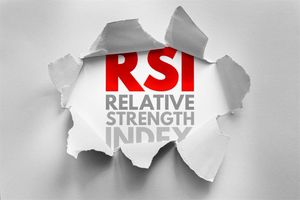
In the ever-evolving landscape of digital assets, a fascinating divergence of opinion continues to capture the attention of investors and market analysts alike. On one side stands Cathie Wood, CEO of Ark Invest, a steadfast proponent of Bitcoin's (BTC-USD) unparalleled dominance as a global monetary system. On the other, Tom Lee, Co-founder of Fundstrat Global Advisors and Chairman of BitMine, champions Ethereum (ETH-USD) as "Wall Street's blockchain of choice," poised for a significant "super cycle." This intellectual sparring takes place against a backdrop of considerable market activity, most notably the recent, substantial outflows from U.S. Ethereum exchange-traded funds (ETFs) in late September 2025, signaling a period of heightened caution and recalibration within the crypto market.
These contrasting perspectives, from two of the most influential figures in financial technology, highlight the fundamental debate shaping the future of cryptocurrency investments. While Wood's vision centers on Bitcoin's role as a digital gold and a secure, decentralized store of value, Lee sees Ethereum's utility in decentralized finance (DeFi), stablecoins, and real-world asset (RWA) tokenization as its primary driver for explosive growth. The recent ETF outflows, affecting both Ethereum and Bitcoin funds, underscore the market's sensitivity to macroeconomic uncertainties and price volatility, challenging even the most ardent long-term convictions.
A Battle of Crypto Titans: Bitcoin's Monetary Might vs. Ethereum's Institutional Ascent
The core of this market narrative revolves around the distinct philosophies of Cathie Wood and Tom Lee. Cathie Wood, through Ark Invest (ARKK), has consistently articulated a vision where Bitcoin reigns supreme, predicting its price could exceed $1 million within the next five years. Her conviction stems from Bitcoin's robust security, its fixed supply of 21 million coins, and its decentralized nature, which she believes establishes it as the ultimate "rules-based global monetary system." Wood frequently emphasizes Bitcoin's status as the only Layer 1 blockchain never to have been hacked, positioning it as a superior store of value to even traditional assets like gold. She remains skeptical of an "ETH flippening," asserting Bitcoin's enduring role as the primary monetary standard. However, in a nuanced move, Ark Invest has shown a recent "warming up" to Ethereum, evidenced by strategic investments in BitMine, a company involved in ETH mining and infrastructure, suggesting a pragmatic approach to participating in Ethereum's growth without compromising her core belief in Bitcoin's primacy.
In stark contrast, Tom Lee, Co-founder and Head of Research at Fundstrat Global Advisors, maintains an exceptionally bullish outlook on Ethereum, projecting it could reach between $10,000 and $15,000 by the end of 2025. Lee identifies Ethereum as a "truly neutral chain" that is rapidly becoming "Wall Street's blockchain of choice," favored by institutions for its perceived neutrality and lack of insider advantages. His optimism is fueled by several factors, including surging institutional treasury adoption, advancements in Layer 2 scaling solutions, and the transformative impact of new U.S. tokenization rules, such as the GENIUS Act passed in July 2025. Lee envisions Ethereum entering a "super cycle" that could span a decade or more, driven by its integral role across DeFi, stablecoins, RWA tokenization, and emerging AI-driven economies. Reflecting this conviction, his firm, BitMine, has strategically transformed into an Ethereum-focused treasury firm, now holding over 2.4 million ETH, making it the largest Ethereum treasury globally. Despite his strong advocacy for Ethereum, Lee also holds a bullish outlook on Bitcoin, forecasting it could reach $200,000–$250,000 by the end of 2025, characterizing his differing views with Wood as a "friendly disagreement."
The immediate market reaction to these dynamics has been particularly evident in the performance of Ethereum ETFs. The latter half of September 2025 witnessed significant outflows from U.S. Ethereum ETFs, totaling an historic $795.6 million for the week ending September 26, marking the largest weekly withdrawal since their launch in July 2024. This trend included notable daily outflows of $251.2 million on September 25 and $76 million on September 22. Major funds such as Fidelity's FETH (Fidelity Wise Origin Ethereum Fund) and BlackRock's ETHA (iShares Ethereum Trust) were particularly impacted, with FETH experiencing $362 million in redemptions and ETHA losing over $200 million during that week. These outflows were largely attributed to increased price volatility in the Ethereum market, broader macroeconomic uncertainties, and a general increase in caution among institutional investors, coinciding with Ethereum's price briefly dipping below the $4,000 mark. It is important to note that Bitcoin ETFs also experienced substantial outflows during the same period, with $902.5 million for the week ending September 26, indicating a broader risk-off sentiment across the crypto market.
Navigating the Volatility: Winners and Losers in the Digital Asset Race
The contrasting views of Wood and Lee, coupled with the recent ETF outflows, create a complex landscape of potential winners and losers among public companies and financial entities deeply intertwined with the digital asset space. Companies with significant Bitcoin holdings, often dubbed "Bitcoin proxy stocks," such as MicroStrategy (NASDAQ: MSTR), stand to benefit significantly if Wood's long-term vision of Bitcoin's monetary dominance materializes and its price ascends to new highs. Their balance sheets are directly exposed to Bitcoin's performance, making them direct beneficiaries of a sustained bull run driven by institutional adoption and a "digital gold" narrative. Similarly, Bitcoin mining companies like Marathon Digital Holdings (NASDAQ: MARA) and Riot Platforms (NASDAQ: RIOT) would see increased profitability and potentially higher stock valuations as Bitcoin's value strengthens, making their mining operations more lucrative.
On the other hand, firms heavily invested in or building on the Ethereum ecosystem could see substantial gains if Tom Lee's "super cycle" prediction for Ethereum comes to fruition. BitMine, for instance, a company whose chairman is Tom Lee and which has strategically transformed into an Ethereum-focused treasury firm, holding over 2.4 million ETH, is uniquely positioned to capitalize on Ethereum's growth. Its direct exposure means its fortunes are closely tied to ETH's price appreciation and its increasing utility in DeFi and RWA tokenization. Other companies developing Layer 2 scaling solutions or integrating Ethereum's smart contract capabilities into their services could also emerge as significant winners. However, the recent Ethereum ETF outflows highlight a vulnerability: these companies, and the ETFs themselves, are susceptible to short-term market sentiment, macroeconomic shifts, and price volatility, which can lead to periods of significant capital withdrawal and dampened investor confidence.
The financial institutions offering crypto ETFs, such as Fidelity (NYSE: FNF) with its FETH and BlackRock (NYSE: BLK) with its ETHA, find themselves in a dual position. While the cumulative inflows into Ethereum ETFs since their inception still exceed $13 billion, indicating persistent long-term institutional confidence, the recent outflows demonstrate the inherent risks and the sensitivity of these products to market fluctuations. These firms win by attracting assets under management (AUM) and generating fees, but they also face reputational and financial risks during periods of significant redemptions. The broader crypto exchanges like Coinbase Global (NASDAQ: COIN) also stand to gain from increased trading volumes and institutional interest in both Bitcoin and Ethereum, regardless of which asset ultimately dominates, as they provide the infrastructure for market participation. However, sustained periods of outflow or decreased investor interest across the board would negatively impact their revenue streams.
Beyond the Headlines: Broader Implications for the Crypto Landscape
The ongoing debate between Bitcoin maximalism and Ethereum's utility-driven growth, exacerbated by recent ETF movements, carries significant implications for the broader cryptocurrency landscape. This event fits squarely into the broader industry trend of institutionalization, where traditional financial players are increasingly engaging with digital assets through regulated products like ETFs. The substantial cumulative inflows into both Bitcoin and Ethereum ETFs, despite recent outflows, underscore a persistent long-term institutional confidence in the asset class. However, the volatility experienced highlights that these sophisticated investors are not immune to market jitters and are quick to reallocate capital based on perceived risk and macroeconomic indicators. This behavior suggests a maturing market where capital flows are more dynamic and reactive than in earlier, retail-dominated phases.
The potential ripple effects on competitors and partners are considerable. If Bitcoin continues to solidify its position as the primary store of value, it could exert gravitational pull on capital, potentially drawing funds away from smaller altcoins and even some Layer 1 competitors to Ethereum. Conversely, if Ethereum's utility in DeFi, RWA tokenization, and enterprise solutions continues its "super cycle," it could establish a stronger network effect, attracting more developers, projects, and institutional capital, thereby challenging Bitcoin's market share dominance in terms of overall ecosystem value. The success or struggle of these two giants inevitably influences the entire altcoin market, as many projects are built on or are interoperable with either Bitcoin or Ethereum's ecosystems. Regulatory or policy implications are also paramount. The very existence and trading of these ETFs are a direct result of evolving regulatory frameworks. Continued market volatility and significant capital movements could prompt regulators to scrutinize these products more closely, potentially leading to new guidelines or restrictions aimed at investor protection. The GENIUS Act in July 2025, which favors tokenization, clearly played a role in fueling Ethereum's bullish narrative, demonstrating how policy can directly influence market sentiment and investment flows.
Historically, the financial markets have witnessed similar debates over asset class dominance, such as gold versus fiat currencies, or different tech giants vying for market leadership. The current crypto dynamic echoes these historical precedents, where innovation, utility, and market acceptance ultimately dictate long-term value. The "flippening" narrative, though dismissed by Wood, has historical parallels in technology, where a challenger's superior utility eventually overtakes an incumbent's established position. However, Bitcoin's unique properties as a decentralized, scarce, and secure monetary network provide a strong counter-argument, suggesting that its role may be more akin to a foundational layer rather than a direct competitor to Ethereum's application-centric utility. The recent outflows, affecting both major crypto ETFs, also draw parallels to periods of broader market uncertainty in traditional finance, where investors seek safety in less volatile assets or cash.
The Road Ahead: What's Next for Bitcoin, Ethereum, and the Crypto Market
Looking ahead, the short-term future for Bitcoin and Ethereum will likely remain characterized by continued price volatility, influenced by macroeconomic data, regulatory announcements, and shifts in institutional sentiment. While the recent Ethereum ETF outflows were significant, the market quickly saw ETH's price rebound above $4,000 by late September 26, suggesting underlying resilience and robust long-term fundamentals driven by DeFi adoption. In the short term, investors will be closely watching for stabilization in ETF flows, signs of renewed institutional buying, and any significant policy updates that could either boost or hinder crypto adoption. The upcoming months could also see increased competition among Layer 2 solutions on Ethereum, which, while beneficial for scalability, could introduce new dynamics to Ethereum's ecosystem value proposition.
In the long term, both Bitcoin and Ethereum are poised for further institutional integration and broader adoption, albeit through potentially different pathways. Bitcoin's narrative as a digital store of value and an inflation hedge is likely to strengthen, especially amidst global economic uncertainties. Its fixed supply and decentralized nature continue to appeal to investors seeking an alternative to traditional financial systems. For Ethereum, its long-term trajectory hinges on its ability to maintain its lead in smart contract platforms, successfully implement scaling solutions, and expand its utility across new frontiers like AI-driven economies and further RWA tokenization. Strategic pivots or adaptations will be crucial for both. Bitcoin may need to further solidify its infrastructure for broader accessibility, while Ethereum must ensure its network remains robust, secure, and scalable to handle increasing demand and competition.
Market opportunities or challenges that may emerge include the potential for new, innovative financial products built around these assets, further integration with traditional finance systems, and the ongoing development of Web3 applications. A key challenge will be navigating the evolving regulatory landscape, which could either foster or impede growth. Potential scenarios include a "co-existence" where both Bitcoin and Ethereum thrive in their respective niches – Bitcoin as the primary monetary layer and Ethereum as the dominant utility layer – or a more competitive environment where one asset significantly outpaces the other. The "friendly disagreement" between titans like Wood and Lee underscores that both assets have compelling bull cases, and the market's future may well accommodate the growth of both, albeit with different drivers and risk profiles.
Final Thoughts: A Market in Flux, Opportunities Abound
The contrasting yet often overlapping perspectives of Cathie Wood and Tom Lee, set against the backdrop of recent Ethereum ETF outflows, encapsulate the dynamic and often unpredictable nature of the cryptocurrency market. The key takeaway is that while Bitcoin maintains its strong narrative as a foundational global monetary system and a superior store of value, Ethereum's utility-driven growth, fueled by institutional adoption and its pivotal role in DeFi and tokenization, presents an equally compelling investment thesis. The significant ETF outflows in late September 2025 served as a potent reminder of the market's sensitivity to price volatility and broader macroeconomic conditions, affecting even highly anticipated institutional investment vehicles.
Moving forward, the market is likely to remain in a state of flux, characterized by periods of rapid growth interspersed with corrections and consolidations. Investors should assess both Bitcoin and Ethereum based on their unique value propositions and risk profiles. Bitcoin's scarcity and security make it a strong candidate for long-term capital preservation and a hedge against inflation, aligning with Wood's vision. Ethereum's expansive ecosystem and continuous innovation position it for substantial growth driven by its utility, resonating with Lee's "super cycle" prediction. The cumulative inflows into crypto ETFs still reflect a strong underlying institutional belief in the asset class's long-term potential, despite short-term fluctuations.
For investors, the coming months will demand close attention to several key indicators. These include the trajectory of global macroeconomic policies, particularly interest rates and inflation, which significantly influence risk appetite. Regulatory developments, especially concerning crypto ETFs and stablecoins, will also play a crucial role. Furthermore, monitoring on-chain metrics for both Bitcoin and Ethereum, such as network activity, transaction volumes, and developer engagement, will provide insights into their fundamental health and adoption trends. The ongoing "friendly disagreement" between titans like Wood and Lee is not just an intellectual exercise; it reflects the diverse and robust opportunities that continue to emerge in the fascinating world of digital assets.
This content is intended for informational purposes only and is not financial advice





